Abstract
Hereditary diseases and congenital malformations have been reported to affect 2-5% of all live births. Available evidence suggests that genetic disorders are equally important also in countries of the Eastern Mediterranean Region. Considerable achievements have been made over the last two decades in controlling communicable diseases in the region. Concurrently, there has been a mounting awareness of the increasing importance of hereditary disorders. Certain genetically determined diseases such as the haemoglobinopathies and enzymopathies are extremely common in the region and the need to initiate public health measures for their control is increasingly being recognized. The following factors may contribute to the elevated prevalence of genetically determined disorders: the high consanguinity rates; the high frequency of haemoglobinopathies and glucose-6-phosphate dehydrogenase deficiency; the trend of continuing to bear children up to menopause; the general lack of public awareness about genetic diseases; and the dearth of genetic services in the region. These and some other related issues are discussed in detail in this review article.
Full text
PDF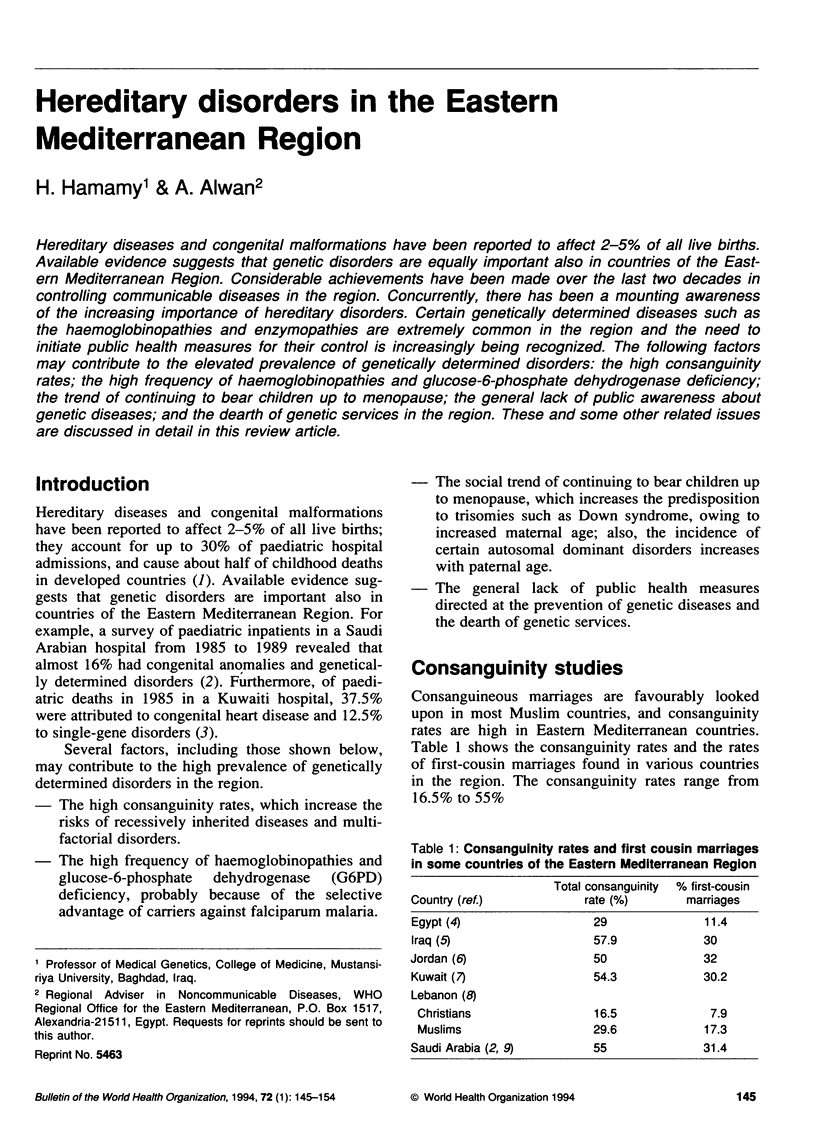
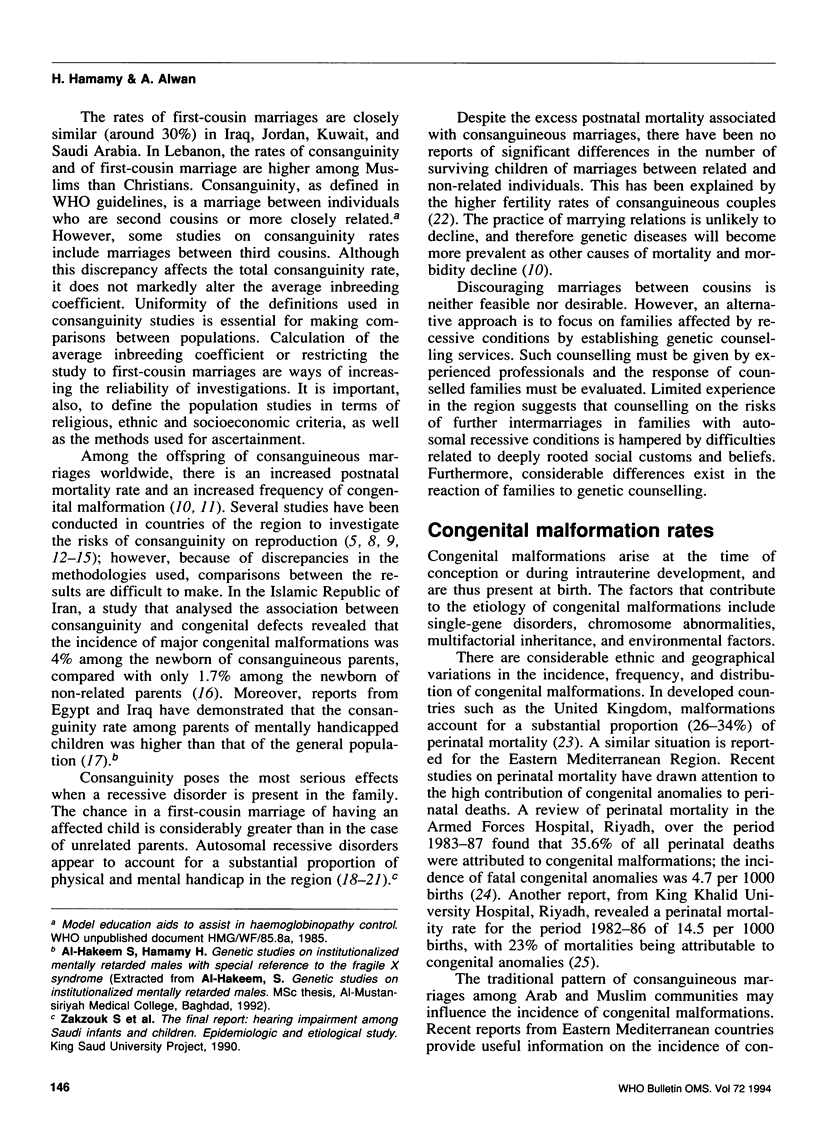
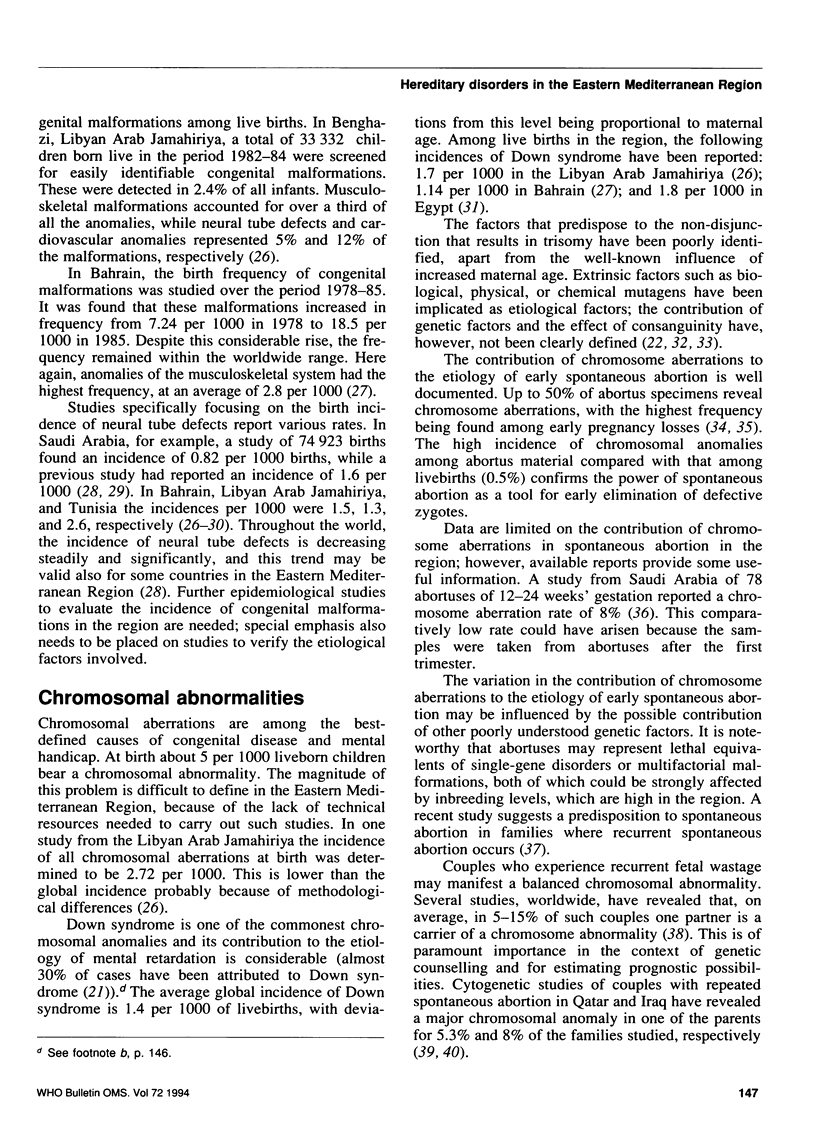
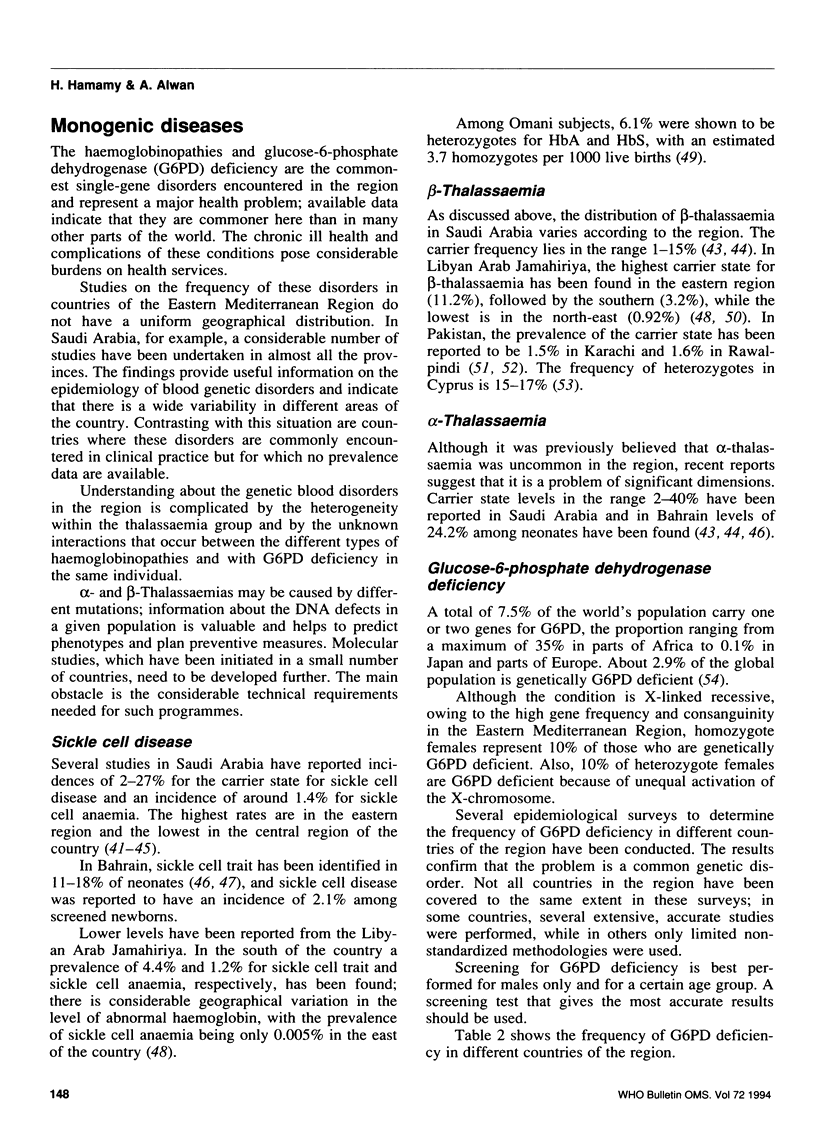
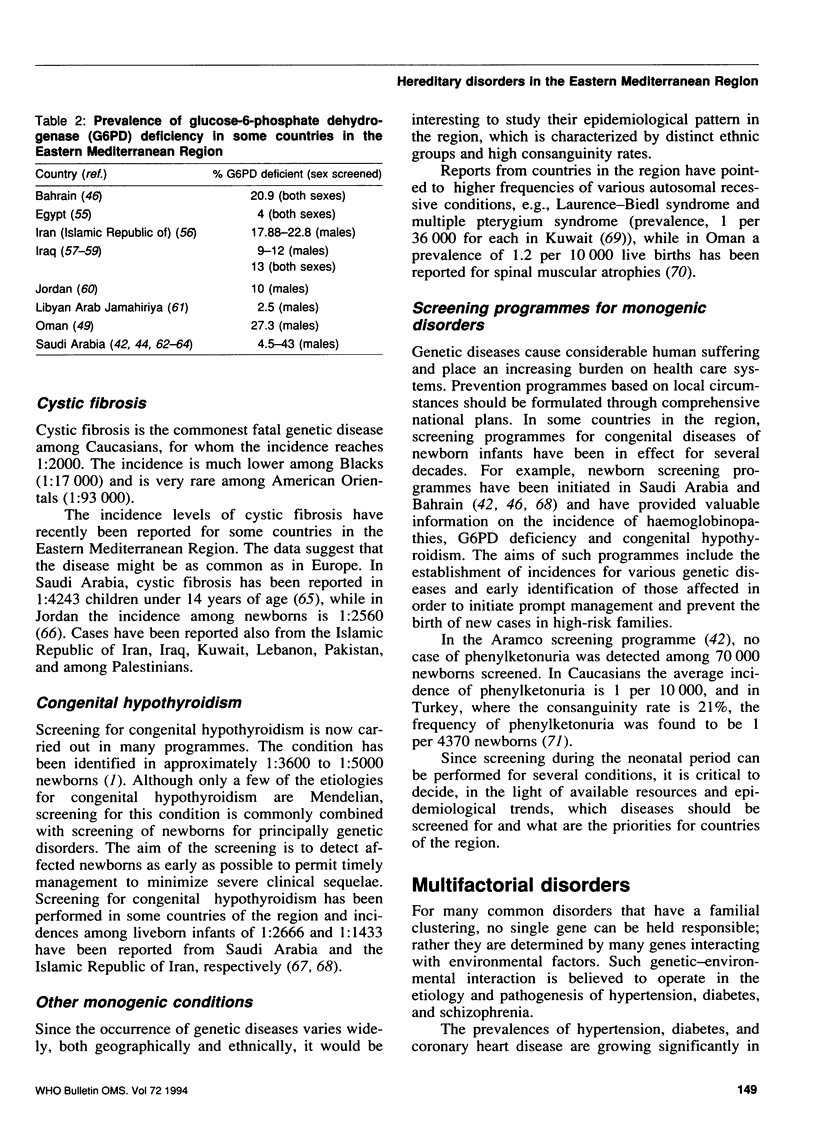
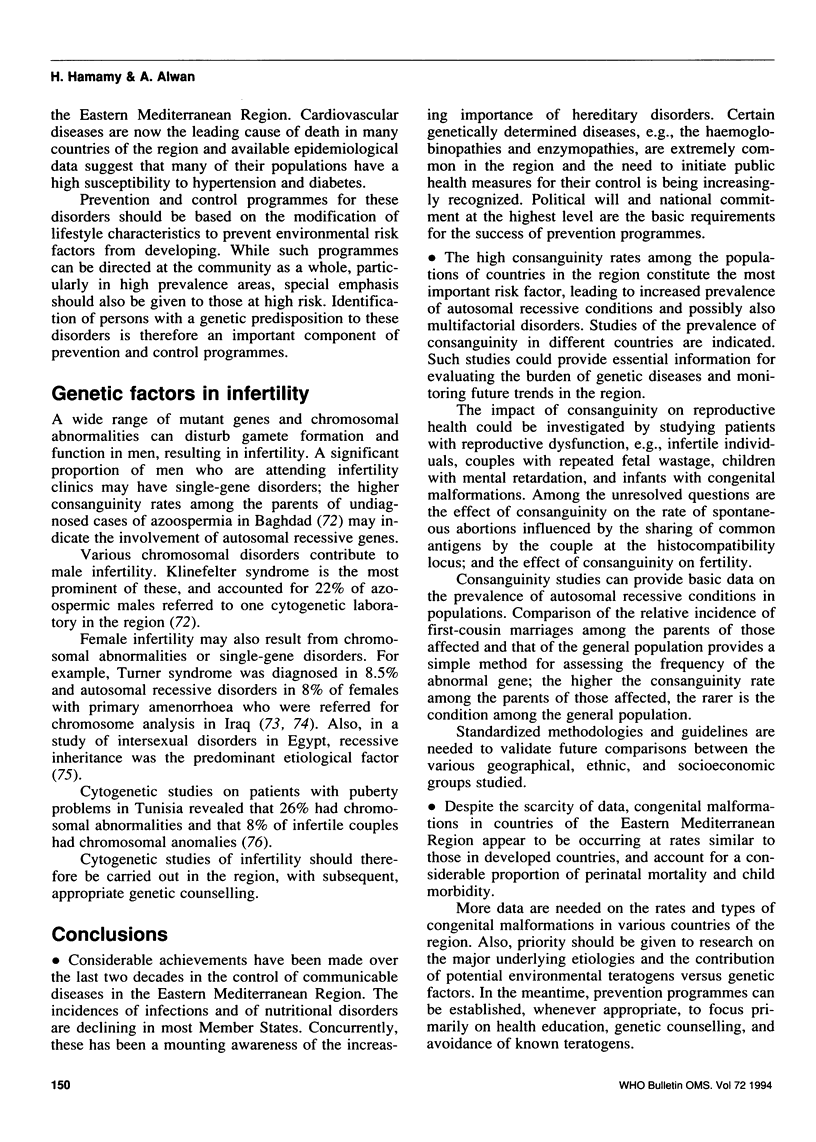
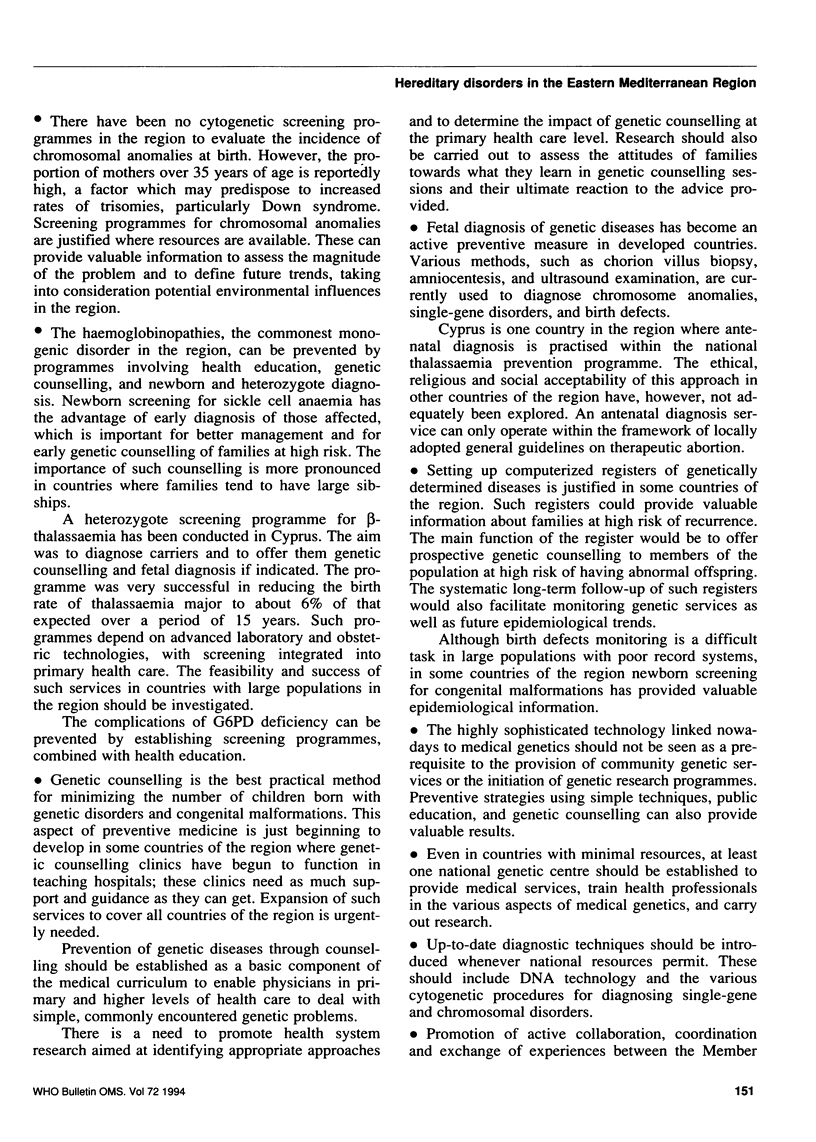
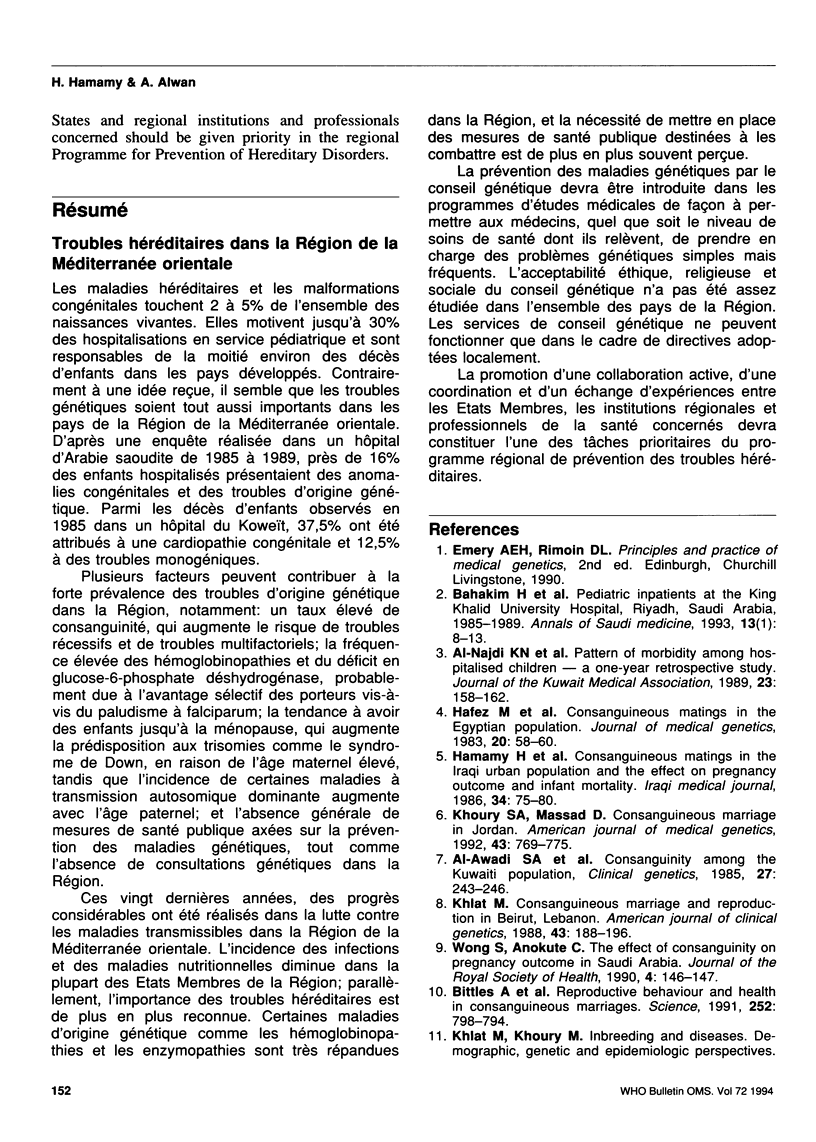
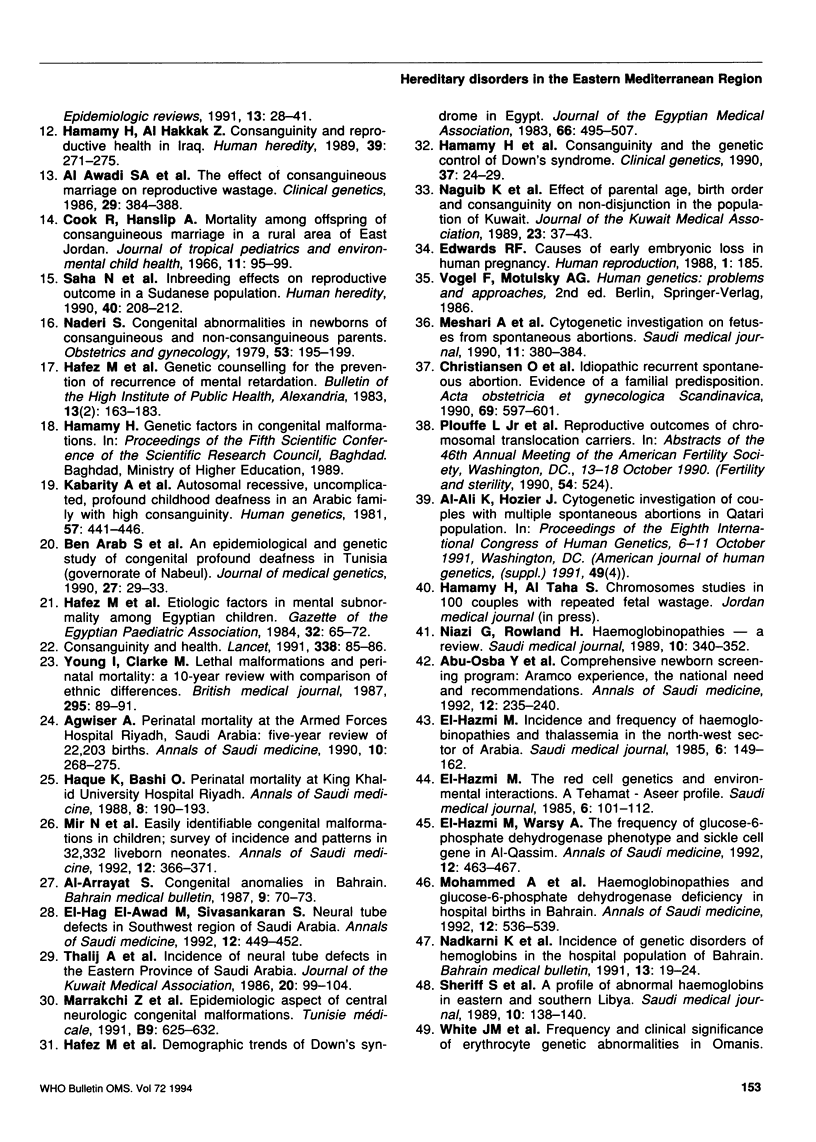
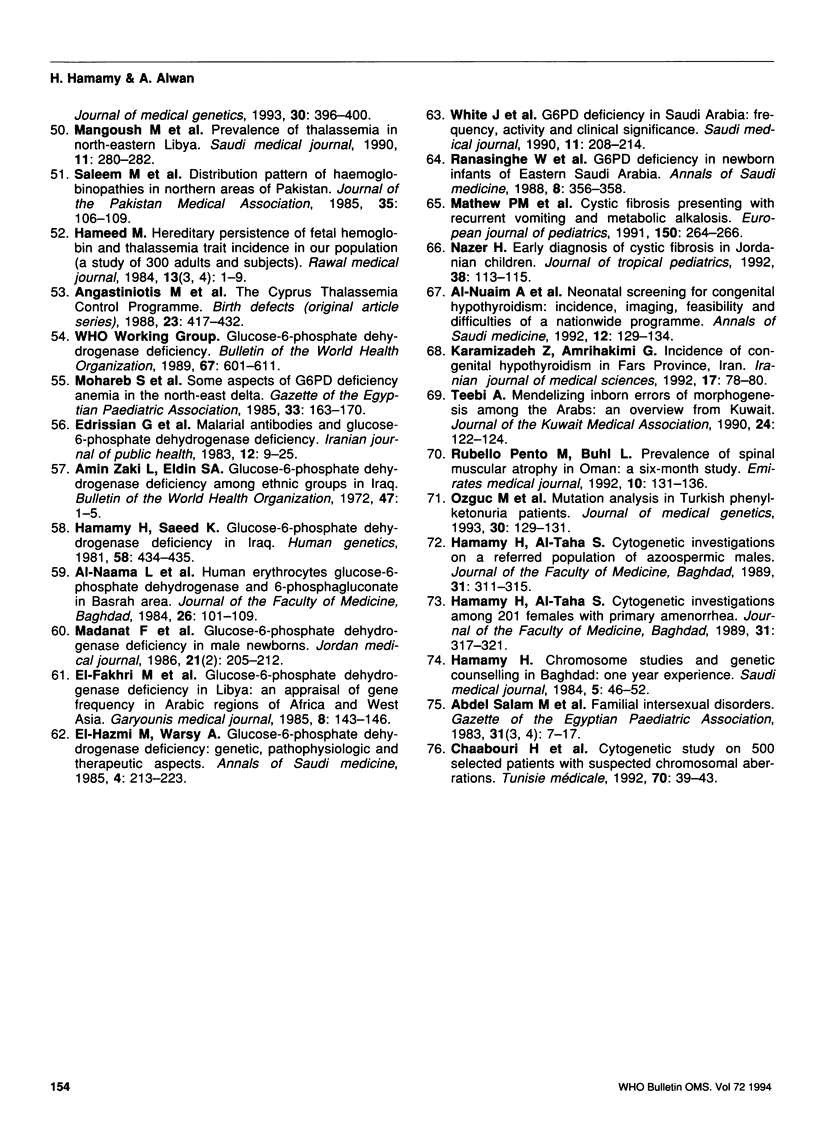
Selected References
These references are in PubMed. This may not be the complete list of references from this article.
- Abu-Osba Y. K., Mallouh A., Salamah M., Hann R., Thalji A., Hamdan J., Sa'di A. A. Comprehensive newborn screening program: ARAMCO experience, the national need and recommendations. Ann Saudi Med. 1992 May;12(3):235–240. doi: 10.5144/0256-4947.1992.235. [DOI] [PubMed] [Google Scholar]
- Al-Awadi S. A., Naguib K. K., Moussa M. A., Farag T. I., Teebi A. S., el-Khalifa M. Y. The effect of consanguineous marriages on reproductive wastage. Clin Genet. 1986 May;29(5):384–388. doi: 10.1111/j.1399-0004.1986.tb00509.x. [DOI] [PubMed] [Google Scholar]
- Angastiniotis M., Kyriakidou S., Hadjiminas M. The Cyprus Thalassemia Control Program. Birth Defects Orig Artic Ser. 1988;23(5B):417–432. [PubMed] [Google Scholar]
- Bahakim H. M., Bamgboye E. A., Mahdi A. H., Al-Mugeiren M. M., Familusi J. B. Pediatrics inpatients at the King Khalid University Hospital, Riyadh, Saudi Arabia, 1985-1989. Ann Saudi Med. 1993 Jan;13(1):8–13. doi: 10.5144/0256-4947.1993.8. [DOI] [PubMed] [Google Scholar]
- Ben Arab S., Bonaïti-Pellié C., Belkahia A. An epidemiological and genetic study of congenital profound deafness in Tunisia (governorate of Nabeul). J Med Genet. 1990 Jan;27(1):29–33. doi: 10.1136/jmg.27.1.29. [DOI] [PMC free article] [PubMed] [Google Scholar]
- Bittles A. H., Mason W. M., Greene J., Rao N. A. Reproductive behavior and health in consanguineous marriages. Science. 1991 May 10;252(5007):789–794. doi: 10.1126/science.2028254. [DOI] [PubMed] [Google Scholar]
- Christiansen O. B., Mathiesen O., Lauritsen J. G., Grunnet N. Idiopathic recurrent spontaneous abortion. Evidence of a familial predisposition. Acta Obstet Gynecol Scand. 1990;69(7-8):597–601. doi: 10.3109/00016349009028702. [DOI] [PubMed] [Google Scholar]
- Cook R., Hanslip A. Mortality among offspring of consanguineous marriage in a rural area of East Jordan. J Trop Pediatr Afr Child Health. 1966 Mar;11(4):95–99. doi: 10.1093/oxfordjournals.tropej.a057182. [DOI] [PubMed] [Google Scholar]
- Edwards R. G. Causes of early embryonic loss in human pregnancy. Hum Reprod. 1986 Apr;1(3):185–198. doi: 10.1093/oxfordjournals.humrep.a136378. [DOI] [PubMed] [Google Scholar]
- El-Awad M. el-H, Sivasankaran S. Neural tube defects in Southwestern region of Saudi Arabia. Ann Saudi Med. 1992 Sep;12(5):449–452. doi: 10.5144/0256-4947.1992.449. [DOI] [PubMed] [Google Scholar]
- El-Hazmi M. A., Warsy A. S. The frequency of glucose-6-phosphate dehydrogenase phenotypes and sickle cell gene in Al-Qassim. Ann Saudi Med. 1992 Sep;12(5):463–467. doi: 10.5144/0256-4947.1992.463. [DOI] [PubMed] [Google Scholar]
- Hafez M., El-Tahan H., Awadalla M., El-Khayat H., Abdel-Gafar A., Ghoneim M. Consanguineous matings in the Egyptian population. J Med Genet. 1983 Feb;20(1):58–60. doi: 10.1136/jmg.20.1.58. [DOI] [PMC free article] [PubMed] [Google Scholar]
- Hamamy H. A., Saeed T. K. Glucose-6-phosphate dehydrogenase deficiency in Iraq. Hum Genet. 1981;58(4):434–435. doi: 10.1007/BF00282832. [DOI] [PubMed] [Google Scholar]
- Hamamy H. A., al-Hakkak Z. S. Consanguinity and reproductive health in Iraq. Hum Hered. 1989;39(5):271–275. doi: 10.1159/000153871. [DOI] [PubMed] [Google Scholar]
- Hamamy H. A., al-Hakkak Z. S., al-Taha S. Consanguinity and the genetic control of Down syndrome. Clin Genet. 1990 Jan;37(1):24–29. doi: 10.1111/j.1399-0004.1990.tb03386.x. [DOI] [PubMed] [Google Scholar]
- Kabarity A., Al-Awadi S. A., Farag T. I., Mallalah G. Autosomal recessive "uncomplicated" profound childhood deafness in an Arabic family with high consanguinity. Hum Genet. 1981;57(4):444–446. doi: 10.1007/BF00281704. [DOI] [PubMed] [Google Scholar]
- Khlat M. Consanguineous marriage and reproduction in Beirut, Lebanon. Am J Hum Genet. 1988 Aug;43(2):188–196. [PMC free article] [PubMed] [Google Scholar]
- Marrakchi Z., Siala Gaigi S., Chabchoub A. R., Ayachi R., Khrouf N. Aspects épidémiologiques des malformations congénitales du système nerveux central. Tunis Med. 1991 Nov;69(11):627–632. [PubMed] [Google Scholar]
- Mathew P. M., Hamdan J. A., Nazer H. Cystic fibrosis presenting with recurrent vomiting and metabolic alkalosis. Eur J Pediatr. 1991 Feb;150(4):264–266. doi: 10.1007/BF01955527. [DOI] [PubMed] [Google Scholar]
- Mir N. A., Galczek W. C., Soni A. Easily identifiable congenital malformations in children: Survey of incidence and pattern in 32,332 live born neonates. Ann Saudi Med. 1992 Jul;12(4):366–371. doi: 10.5144/0256-4947.1992.366. [DOI] [PubMed] [Google Scholar]
- Moretti G., Staeffen J., Ballan P., Ferrer J., Broustet A., Roques J. C., Beylot J., Seriès C. Etude enzymatique des leucocytes au cours des leucoses et de la trisomie 21. Une anomalie commune: l'élévation de la galactose-1-phosphate uridylyl transférase. Nouv Presse Med. 1974 Feb 23;3(8):429–432. [PubMed] [Google Scholar]
- Naderi S. Congenital abnormalities in newborns of consanguineous and nonconsanguineous parents. Obstet Gynecol. 1979 Feb;53(2):195–199. [PubMed] [Google Scholar]
- Nazer H. M. Early diagnosis of cystic fibrosis in Jordanian children. J Trop Pediatr. 1992 Jun;38(3):113–115. doi: 10.1093/tropej/38.3.113. [DOI] [PubMed] [Google Scholar]
- Saha N., Hamad R. E., Mohamed S. Inbreeding effects on reproductive outcome in a Sudanese population. Hum Hered. 1990;40(4):208–212. doi: 10.1159/000153932. [DOI] [PubMed] [Google Scholar]
- Saleem M., Ahmad P. A., Mubarik A., Ahmed S. A. Distribution pattern of haemoglobinopathies in northern areas of Pakistan. J Pak Med Assoc. 1985 Apr;35(4):106–109. [PubMed] [Google Scholar]
- Wong S. S., Anokute C. C. The effect of consanguinity on pregnancy outcome in Saudi Arabia. J R Soc Health. 1990 Aug;110(4):146–147. doi: 10.1177/146642409011000414. [DOI] [PubMed] [Google Scholar]
- Young I. D., Clarke M. Lethal malformations and perinatal mortality: a 10 year review with comparison of ethnic differences. Br Med J (Clin Res Ed) 1987 Jul 11;295(6590):89–91. doi: 10.1136/bmj.295.6590.89. [DOI] [PMC free article] [PubMed] [Google Scholar]


